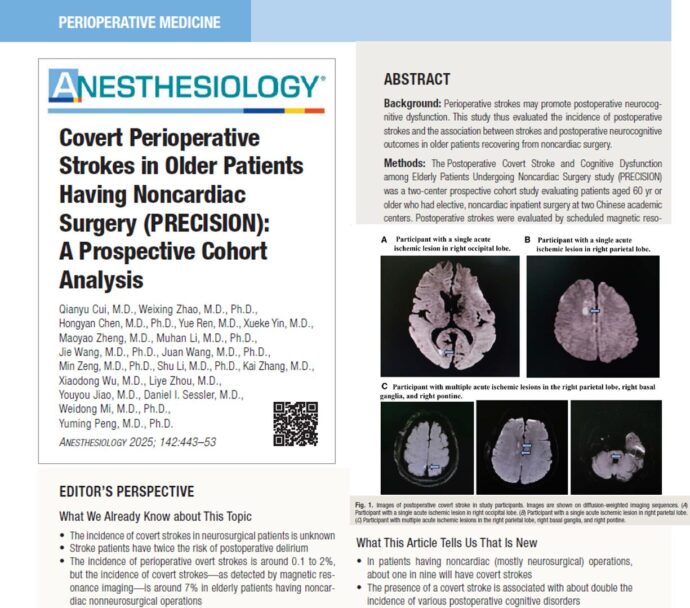
Incidence of acute compartment syndrome with routine use of regional anesthesia for long bone fractures: Key insights
Acute compartment syndrome (ACS) is a severe complication of traumatic long bone fractures that can threaten limb viability and, in extreme cases, life. This condition requires timely diagnosis and intervention to prevent irreversible damage. Traditionally, the use of Peripheral Nerve Blocks (PNBs) for pain management in such patients has been controversial, primarily due to concerns that PNBs may mask the symptoms of ACS, particularly pain, potentially delaying diagnosis. A recent retrospective study conducted at a level I trauma tertiary academic institution provides valuable insights into the incidence of ACS with routine use of regional anesthesia for patients with long bone fractures.
What is ACS?
Acute Compartment Syndrome occurs when increased pressure within a closed muscle compartment compromises circulation and tissue function within that space. It is most commonly associated with fractures, particularly of the tibia, but can also occur in other contexts, such as soft tissue injuries or burns.
- Symptoms: The “6 Ps” – Pain, Pallor, Pulselessness, Paralysis, Poikilothermia, and Paresthesia.
- Complications: If untreated, ACS can lead to permanent muscle and nerve damage, resulting in loss of function or even limb amputation.
Study method
The study involved an electronic medical record search over a decade to identify patients with long bone fractures (tibia, fibula, femur, humerus, radius, ulna). It also identified patients diagnosed with ACS or those who underwent a fasciotomy, a surgical procedure considered equivalent to diagnosing severe ACS.
Results
- Overall incidence of ACS: Out of 26,537 patients with long bone fractures, 27 were confirmed to have ACS caused by long bone fractures, resulting in an incidence rate of 0.1% (1.017 per 1000 patients).
- Time to diagnosis: On average, ACS was diagnosed 13 hours after trauma. Delays in diagnosis did not necessarily correlate with worse outcomes, suggesting a complex interplay of factors influencing prognosis.
- Regional anesthesia and ACS: Out of the 27 patients with confirmed ACS, only three had received PNBs. In these cases, pain persisted despite the nerve blocks, prompting immediate surgical intervention.
Implications for practice
- The study challenges the traditional caution against using PNBs in patients at risk for ACS. With a well-structured protocol and multidisciplinary management, the routine use of regional anesthesia in trauma patients showed a low incidence of ACS.
- Key protocol components:
- Use of low-concentration local anesthetics
- Continuous rather than single-injection nerve blocks
- Frequent monitoring of pain and block effectiveness
- Immediate response to uncontrolled pain, even with an effective nerve block
Protocol for managing patients at risk of ACS with PNBs
- Dedicated acute pain service (APS): Specialized team overseeing pain management with regional anesthesia.
- Continuous peripheral nerve blocks (cPNBs): Preferably used to maintain steady pain relief and avoid masking ACS symptoms.
- Low-concentration anesthetics: Using 0.2% ropivacaine to minimize dense motor and sensory blocks.
- Regular monitoring: Pain scores, sensory and motor block density, and patient responsiveness are frequently assessed.
- Response to breakthrough pain: Immediate re-evaluation by orthopedic and APS teams, potentially leading to fasciotomy if ACS is suspected.
Long-term outcomes:
- Among patients with ACS who received PNBs, two recovered fully without neurological deficits, while one had residual nerve damage due to multiple surgeries post-ACS diagnosis.
- The study suggests that continuous nerve blocks may aid in compartment drainage and improve perfusion, potentially offering benefits beyond pain management.
Conclusion
This study provides evidence that with careful patient selection, appropriate protocols, and vigilant monitoring, the routine use of regional anesthesia in trauma patients with long bone fractures can be safe, with a low risk of delaying the diagnosis of ACS. Future prospective studies are needed to further explore the relationship between regional anesthesia and ACS risk, potentially leading to updated guidelines and improved patient outcomes.
For more detailed information, refer to the full article in Regional Anesthesia & Pain Medicine
Chembrovich S, Ihnatsenka B, Smith C, et al. Incidence of acute compartment syndrome with routine use of regional anesthesia for patients with long bone fractures: a large single-center retrospective review from a level I trauma tertiary academic institution. Reg Anesth Pain Med. 2024;49(7):505-510.
Explore this topic and many more with our Anesthesiology Review Q&A Book, filled with engaging questions to expand your knowledge. Don’t miss out—get your copy on Amazon or Google Books.




